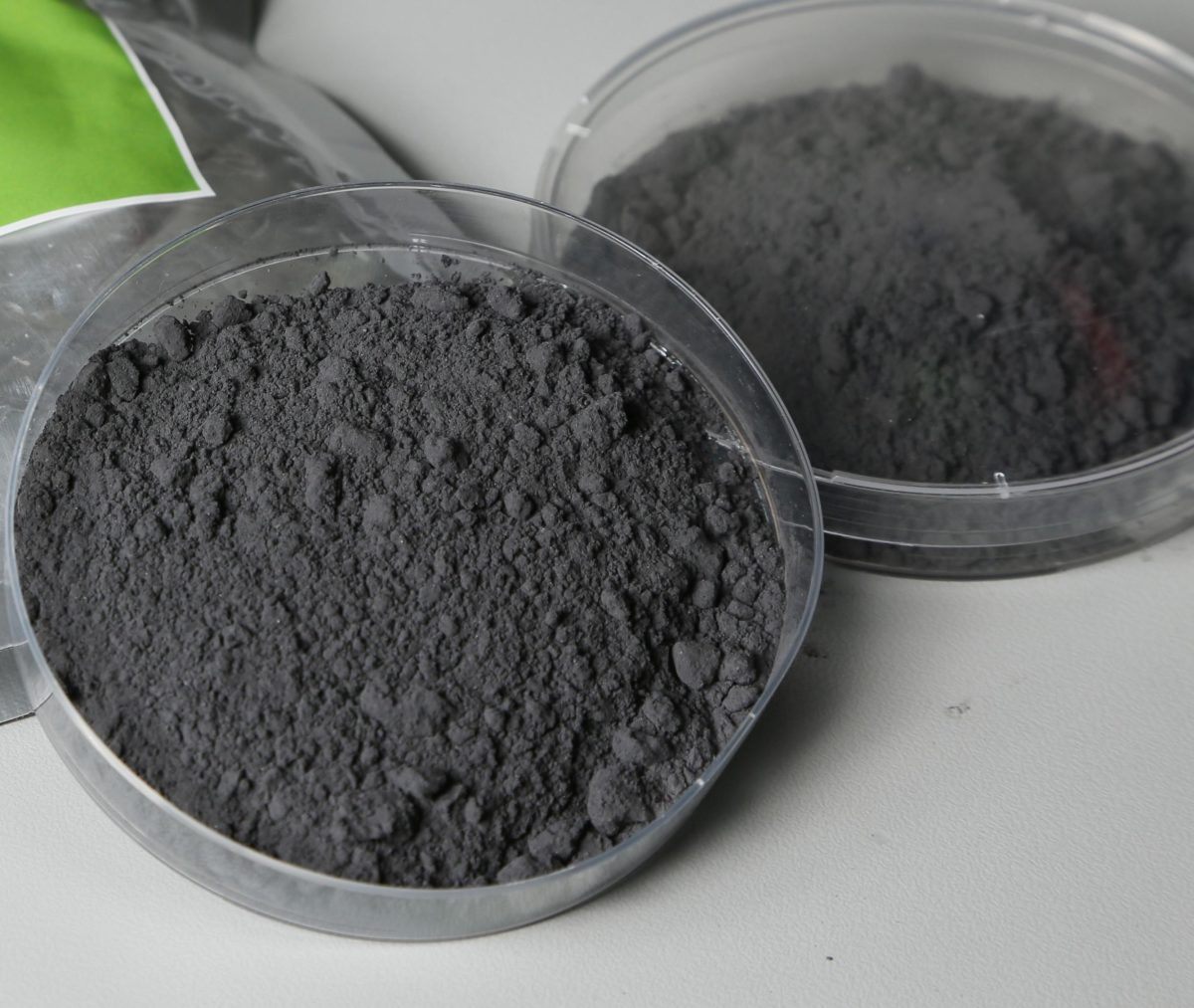EPRO Advance Technology (EAT) has developed Si+, a porous silicon material, to generate ultra-pure hydrogen with volumetric energy density of 140 kg/m³ from a water source. The Hong Kong-based renewables company said that Si+ is a suitable material because it is compact and easily transportable. It generates ultra-pure hydrogen through the reaction, starting from a molecule of Si and two of water, leading to two molecules of hydrogen and one of silicon dioxide. The on-demand reaction can be performed at moderate temperatures of between 0 C and 80 C. EAT said the material could solve problems with the storage and transportation of hydrogen. “Our Si+, which is in solid form and packed in containers (carrying 10,000 20-foot equivalent containers), can ship up to ~30,000 tons of hydrogen per average sized cargo ship,” said the company.
Helmholtz-Zentrum Hereon researchers in Germany have shown that hydrogen storage materials can be produced from recycled industrial waste. “These findings allow for the first time to use a circular economy strategy to produce metal hydrides,” the researchers said, adding that the production of metal hydrides could capture large amounts of otherwise non-recyclable materials. “Metal hydrides seem to be rather insensible to the exact alloy composition in contrast to metallic alloys, e.g. for high performance construction purposes.” Metal hydrides can bind hydrogen in large quantities and rerelease it quickly, decreasing pressure or increasing temperatures. The researchers employed volumetric analysis, D-ray diffractions (XRD), synchrotron radiation powder X-ray diffraction (SR-PXD), scanning electron microscopy (SEM), and differential thermal analysis (DTA) to test high-quality NaAlH produced from the Al-based automotive recycled alloy DIN-GDAlSi10Mg(Cu). The investigations suggest that NaAlH4 was successfully synthesized, demonstrating its properties are comparable with those of high-purity commercial NaAlH4.
Shell New Energies, ENGIE, Vopak, and Anthony Veder have signed an agreement to study the feasibility of producing, liquifying, and transporting green hydrogen from Portugal to the Netherlands, where it would then be stored and distributed for sale. “The consortium envisions hydrogen being produced by electrolysis from renewable power in the industrial zone of the Sines port. The aim is to deliver a first shipment of liquid hydrogen from Sines to Rotterdam by 2027,” said the Port of Rotterdam. The Netherlands is also looking into the option of importing hydrogen from India. In addition, Air Products and Gunvor Petroleum Rotterdam recently signed a development agreement for the import terminal in Rotterdam, with the first hydrogen to the Netherlands expected in 2026.
Johnson Matthey is building a GBP 80 million (€93.8 million) gigafactory at its existing site in Royston, England, to scale up the production of hydrogen fuel cell components. Johnson Matthey aims to sell hydrogen technologies for more than GBP 200 million by the end of 2024. “The gigafactory will initially be capable of manufacturing 3GW of proton exchange membrane (PEM) fuel cell components annually for hydrogen vehicles and is supported by the UK government through the Automotive Transformation Fund,” said the company. The site should be in operation by the first half of 2024.
The EU Commission has approved IPCEI Hy2Tech, the first-ever Important Project of Common European Interest in the hydrogen sector. It involves 35 companies and 41 projects from 15 member states: Austria, Belgium, Czechia, Denmark, Estonia, Finland, France, Germany, Greece, Italy, the Netherlands, Poland, Portugal, Slovakia, and Spain. The total related investments could reach €14.2 billion ($14.5 billion).
Nel has secured its largest-ever purchase order from an undisclosed US customer for 200 MW of alkaline electrolyzer equipment. It will be used for industrial applications, said the Norwegian company.
Hyundai Motor Group and Rolls-Royce have signed a memorandum of understanding to bring hydrogen fuel cells, storage systems, and infrastructure to the aerospace markets. They said they aim to use the technology in Hyundai's Regional Air Mobility vehicles, while also promoting Rolls-Royce all-electric and hybrid-electric propulsion system offerings. They said their commercialization push could start by the end of this decade.
This content is protected by copyright and may not be reused. If you want to cooperate with us and would like to reuse some of our content, please contact: editors@pv-magazine.com.



1 comment
By submitting this form you agree to pv magazine using your data for the purposes of publishing your comment.
Your personal data will only be disclosed or otherwise transmitted to third parties for the purposes of spam filtering or if this is necessary for technical maintenance of the website. Any other transfer to third parties will not take place unless this is justified on the basis of applicable data protection regulations or if pv magazine is legally obliged to do so.
You may revoke this consent at any time with effect for the future, in which case your personal data will be deleted immediately. Otherwise, your data will be deleted if pv magazine has processed your request or the purpose of data storage is fulfilled.
Further information on data privacy can be found in our Data Protection Policy.